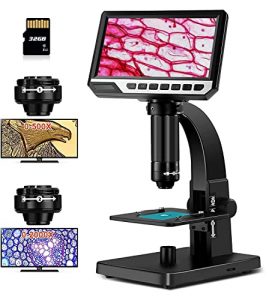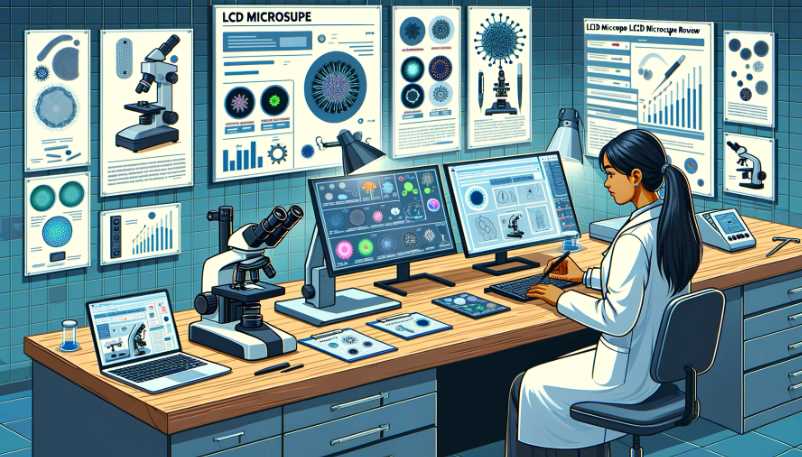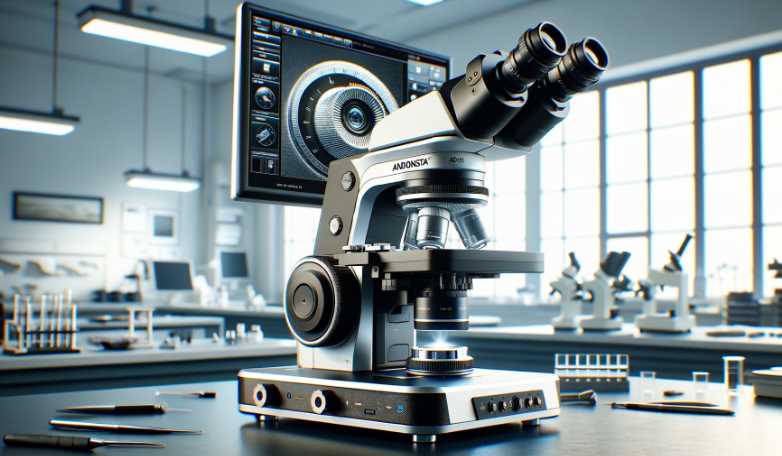Binoculars are an adventurer’s best companion, offering a closer look at the wonders of the world. However, even the most reliable binoculars can suffer from a common woe—double vision. In this guide, we embark on a journey to unravel the mysteries behind double vision, exploring its causes and providing practical solutions. Get ready to delve into the world of binocular optics and discover the joy of crisp, clear vision through your trusted binoculars.

Understanding the Causes of Double Vision
Misalignment of Binoculars
Ever felt like your binoculars were playing tricks on you, producing two images instead of one? This could be due to misalignment. Imagine a mischievous misalignment causing chaos in the optical world of your binoculars. Fear not, we’ll decode this mystery and set things right.
Effects on Vision
Misalignment isn’t just a minor inconvenience; it significantly impacts your viewing experience. Expect blurred images and headaches if your binoculars are not in perfect harmony.
Faulty Diopter Adjustment
The diopter adjustment is your binoculars’ secret weapon for personalized clarity. Let’s uncover the importance of this adjustment and how a misaligned diopter can lead to the dreaded double vision.
Signs of Diopter Misalignment
Have you ever turned the diopter adjustment wheel, hoping for visual nirvana, only to be met with frustration? Learn to identify the signs of diopter misalignment and regain control over your binoculars.
Lens Issues
Your binoculars’ lenses are like windows to the world. However, scratches and dirt can turn these windows into a foggy mess. Join us as we explore common lens issues and how they contribute to double vision.
Lens Coating Problems
Lens coatings enhance image quality, but what if they’re compromised? Discover the impact of coating problems and how to address them for crystal-clear views.
Internal Prism Misalignment
Hidden within your binoculars are prisms responsible for image orientation. If these prisms fall out of line, expect distorted views. Let’s uncover the intricacies of prism misalignment and its consequences.
Identifying Prism Issues
Prism misalignment is like a mischievous character causing havoc in a novel. Learn to identify the signs and regain control of your binoculars’ storyline.
Diagnostic Steps for Double Vision

Self-Assessment of Double Vision
Embark on a self-assessment journey to understand the nuances of double vision. This section provides a quick test and helps you decipher whether your binoculars are playing tricks on you.
Conducting a Quick Test
Grab your binoculars and follow our step-by-step guide to conduct a quick test. It’s time to take charge and assess the situation firsthand.
Checking Diopter Adjustment
The diopter adjustment may hold the key to unlocking a world of visual clarity. Discover the importance of this adjustment and learn how to check if your diopter is misaligned.
Recommended Tools
Armed with the right tools, you can be a binocular detective, solving the mystery of diopter misalignment. Gather your toolkit and get ready for a hands-on experience.
Inspecting Lenses
Your binoculars’ lenses deserve a keen eye. Learn how to inspect and clean them, ensuring they remain pristine for optimal viewing experiences.
Recommended Cleaning Solutions
Cleaning your lenses isn’t just a chore—it’s an art. Explore our recommended cleaning solutions and techniques for maintaining spotless lenses.
Identifying Lens Coating Damage
Scratched or damaged coatings can hinder your viewing pleasure. Let’s delve into the world of lens coatings and how to address damage effectively.

Prism Alignment Verification
Prism misalignment might be the culprit behind your double vision woes. This section provides simple tests to verify prism alignment and restore order to your binocular world.
Understanding Prism Systems
Unlock the secrets of prism systems and understand how they influence your binoculars’ performance. It’s time to demystify prism alignment.
Simple Tests for Prism Misalignment
Conducting tests for prism misalignment is an adventure in itself. Join us on this journey, armed with knowledge and a determination to conquer double vision.
DIY Fixes for Common Issues
Realigning Binoculars
Misaligned binoculars can be realigned without professional help. This section guides you through the process, turning you into a binocular engineer.
Tools Required
Gather your tools, and let’s embark on a DIY adventure. Realigning binoculars is within your grasp, and we’re here to guide you every step of the way.
Diopter Adjustment Tips
The diopter adjustment isn’t just a knob; it’s your ticket to personalized viewing. Discover tips and tricks for perfecting the diopter adjustment and reclaiming control over your binocular vision.
Proper Diopter Adjustment Technique
Mastering the diopter adjustment technique is like discovering a secret code. Unravel the mystery and unlock the full potential of your binoculars.
Addressing Diopter Stiffness
Is your diopter adjustment wheel resisting your attempts at clarity? Learn how to address diopter stiffness and ensure smooth adjustments for optimal viewing.
Cleaning and Maintaining Lenses
Your binoculars’ lenses deserve the utmost care. Explore effective cleaning techniques and maintenance tips to keep your lenses in pristine condition.
Recommended Cleaning Solutions
Not all cleaning solutions are created equal. Dive into our recommendations for cleaning solutions that nurture your lenses, ensuring a lifetime of clear views.
Preventing Scratches
Prevention is the best cure for scratched lenses. Discover practical tips to safeguard your binoculars from scratches and maintain optical excellence.
Prism Realignment Techniques
Prism misalignment doesn’t have to be a daunting challenge. Equip yourself with the knowledge and techniques to realign prisms, restoring order to your binocular world.
Resolving Prism Misalignment
Ready to tackle prism misalignment head-on? This section provides step-by-step instructions, turning you into a prism alignment expert.
Professional Repair vs. DIY
While DIY fixes are empowering, there are times when professional help is the best solution. Explore the factors to consider when deciding between DIY fixes and seeking professional repair services.
Advanced Troubleshooting Techniques
Internal Mechanism Inspection
Venture into the inner workings of your binoculars with an internal mechanism inspection. This section provides a detailed guide to opening your binoculars and identifying internal components.
Opening the Binoculars
Opening your binoculars might feel like entering a forbidden realm. Fear not, as we guide you through the process with precision and care.
Identifying Internal Components
Become acquainted with the internal components of your binoculars. This knowledge empowers you to troubleshoot issues and ensures a deeper understanding of your optical companion.
Repairing Coating Damage
Coating damage can be a thorn in your optical adventures. Explore DIY coating repair kits and professional solutions to address coating damage effectively.
DIY Coating Repair Kits
DIY enthusiasts, rejoice! Discover coating repair kits that empower you to tackle damage with confidence. It’s time to revive your binoculars’ coatings and enhance your viewing pleasure.
Professional Solutions
For those seeking the expertise of professionals, this section outlines the options available for repairing coating damage. Make informed decisions for the optimal restoration of your binoculars.
Seeking Professional Help
There comes a time when professional intervention is necessary. Learn when to contact a professional and how to choose a reliable repair service to entrust with your optical companion.
When to Contact a Professional
Certain issues are beyond the scope of DIY fixes. Understand the red flags that indicate it’s time to seek professional help for your binoculars.
Choosing a Reliable Repair Service
Not all repair services are created equal. Arm yourself with knowledge on selecting a reliable repair service that prioritizes the health and longevity of your binoculars.
Warranty Considerations
Binocular warranties are more than just pieces of paper. Explore the importance of warranties and the availability of manufacturer repair services for added peace of mind.
Checking Binocular Warranty
Before embarking on repairs, ensure you understand your binoculars’ warranty. This section provides insights into checking your warranty and leveraging manufacturer services.
Manufacturer’s Repair Services
Discover the support offered by manufacturers when it comes to repairing your binoculars. Uncover the benefits of utilizing manufacturer repair services for a seamless experience.
If your binoculars are not adjusting or focusing correctly, you can take a few simple steps to solve the issue. It is essential to understand that binoculars must be adjusted frequently to function at their best. Here are five tips on how to fix common problems with your binoculars:
1) Check if the rubber eyecups are stuck down – If the eyecups won’t move, it’s likely that they’re stuck down and need some force applied before they will start moving again. To fix this, you may need to use a pair of pliers or bend them slightly using heat from an iron.
2) Clean lens surfaces – Dust and debris on lenses can cause blurry images and difficulty in adjusting focus. Remove dust particles by gently wiping both sides of each lens with a microfiber cloth dampened in mild dishwashing detergent (or contact liquid cleaner). Make sure all traces of soap residue is removed before putting the lenses back together.

3) Adjust diopter levels – Diopters allow users to adjust image brightness while looking through their glasses. Hence, every person has an optimal viewing experience during different activities or conditions, such as bright sunlight glare or indoors under fluorescent lighting bulbs, which often cause discomfort because people have sensitive eyesight. Most electronic screens emit different blue light waves compared with natural daylight hours outside when outdoor scenes look more crisp due mainly Blue Green Yellow lights waves.
4) Replace front lens element – This process is only necessary if the user notices difficulty seeing through the eyepieces, especially at close range. If you have difficulty viewing things up close and it appears something is wrong with your lenses, it is best to have them professionally cleaned and inspected before replacing the front lens element.
5) Replace focusing ring gears – The focus rings on most binoculars use rubber or metal gears that can become damaged from being bumped, dropped, or subject to other harsh treatment such as windblown sand, etc. For your binoculars to adjust accurately when focusing, the gears must be in good condition and free from any damage.
A binocular is an optical instrument that helps us see an object nearly and clearly. But if you use binoculars for a long time, you may face some difficulties. You may notice some problems with binocular lenses, prisms, and diopter rings.
Because of these problems, you can’t be able to see an object comfortably. To get rid of these, you must identify and fix the exact problem immediately.
But if your binoculars are broken, you can’t be able to fix them or recover them. Then you have to buy new binoculars for appropriate vision. You can fix your binoculars by following the procedures that are given below.
Fixing binocular lenses:
If there is a problem with binocular lenses, you may face problems focusing. Sometimes lenses are displaced for many reasons. It would be best to fix your binocular lenses to place them in the correct position—the steps are given below to fix your binocular lenses.
Firstly, you must collect all lens screwdrivers to open small and medium screws in your binoculars. You can manage this from a shop. You can buy this to use in the future.
You should carefully open the binocular screws with a screwdriver and the tiny lens screw with the necessary screwdriver.
Sometimes, you mayn’t find some lens screws because these are situated under a rubber coat. You should remove those rubber coats with a thin iron stick or knife to find the screw.
Then you should open those screws. Typically screws are situated at the right side of the lens.
After opening the screws, you have to take the lenses and wash them with soapy water. Then, you have to keep the lenses on a dry and fresh cloth to dry.
After drying, you should take lenses and place them at the center. You have to tighten the screw with the screwdriver to keep them in the actual position. You have to avoid touching on lenses.
After finishing these procedures, you should taste your binoculars to check lenses and focus. Yet if you face any trouble, you will have to recheck your binocular lenses and change their position to clear vision and direction.
[If these lenses are broken, you will have to use new lenses instead of those]
Fixing binocular prisms:
Binocular prisms help you to see the actual size and images. These mixed images from both sides support the brain with binocular vision. If you face binary vision problems in binoculars, it may happen to binocular prism problem. Procedures are given below to fix binocular prisms.
You must collect or buy a set of screwdrivers to open the screw of binoculars and binocular prisms.
You should open the screw of a binocular and find the prism location and prism screws. You see 2 screws for each prism. These screws are hidden under a rubber coat or soft cover in some prisms. You have to remove this cover.
You should place a target within 50 meters or 100 meters. Then you have to tighten or lose screws according to their necessity. If you see objects so small, they will have to tighten screws. Otherwise, you have to lose your screws. After doing this, you should again see the target with binoculars. If you find any difficulty again, you will have to fix your screw according to its necessity.
If you notice displacement of binocular prisms, you will have to open screws and place prisms correctly. Then you have to adjust the screws with a screwdriver.
[If these prisms are hampered or damaged, you’ll have to change these prisms and add new prisms]
Fixing binocular diopter ring:
Sometimes binocular focusing ring or diopter ring felt so hard at the time rotating. You’ll have to fix your binocular focusing ring if you face this difficulty.
You have to open the diopter ring with a screwdriver.
You should take fresh soft clothes and a stick. Add the cloths at the bottom of the stick and remove dust from the ring.
You must take some oily cream or grease and spread it in the focusing ring. Then you should add this again on your binoculars.
[You should avoid those grease which spread bad smell]
Frequently asked questions and answers
How should you use your binoculars?
You should use your binoculars properly and carefully.
1. Never keep your binoculars in a wet place for a long time. Because it causes fungus problems.
2. Don’t use your binoculars in stormy or bad weather.
3. You should not touch your binocular lenses.
4. Always fix your binoculars immediately when you face problem.
5. You shouldn’t look at the sun directly by using binoculars.
6. Always clean your binoculars regularly.
7. Avoid dropping binoculars.
Why do you face double vision problems?
You may face double vision problems because of binocular prisms problem and their displacement. You can remove this problem by fixing prisms.
Why do you face focusing problems?
When the lenses deviate from their correct places, then you face a focusing problem. By fixing lenses, you can get rid of this problem. But do not touch the lenses with your hands.
Do binoculars go bad?
Yes, binoculars can go wrong. When the lenses, prisms, or focusing knobs are broken, your prisms go bad.
Can you fix your binoculars at home?
Yes, you can fix your binoculars at home. If you collect the necessary elements and know the procedures, you can fix and repair your binoculars at home.
After all, binoculars are such optical instruments by which you can see an object big and clear. But, if there is any problem with binoculars, you can’t get this opportunity. To get this opportunity again, you should fix and repair your binoculars.
Final Words
As we conclude this journey through the intricacies of fixing binoculars with double vision, remember that the world of optics is an adventure waiting to be explored. Armed with the knowledge gained, you’re now equipped to troubleshoot issues, perform DIY fixes, and make informed decisions about seeking professional help. Let the clear views and vivid details enrich your future adventures, whether you’re birdwatching, stargazing, or enjoying a live event. Happy exploring!



























